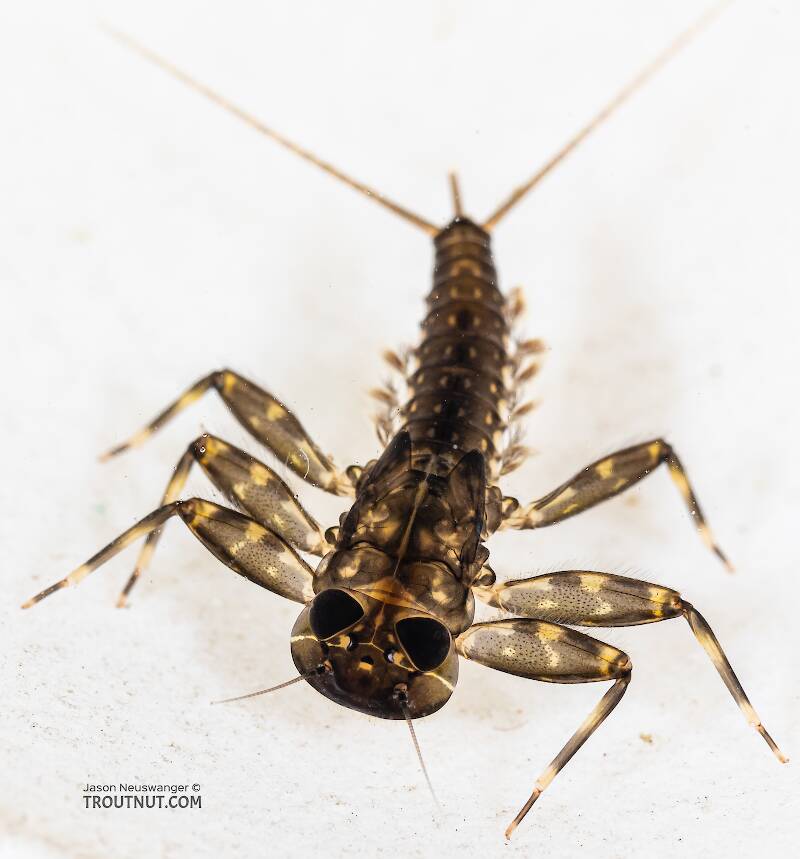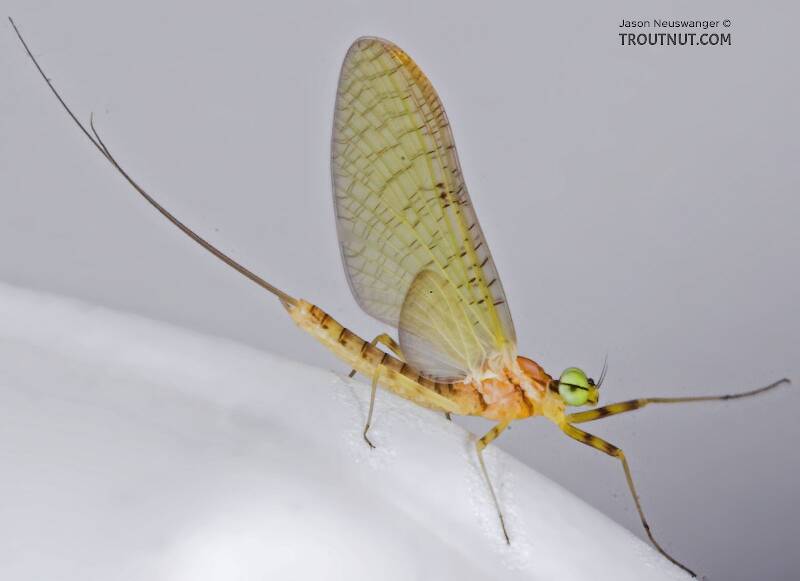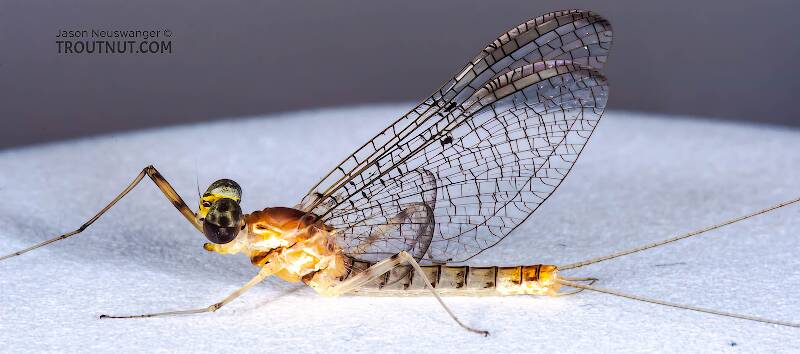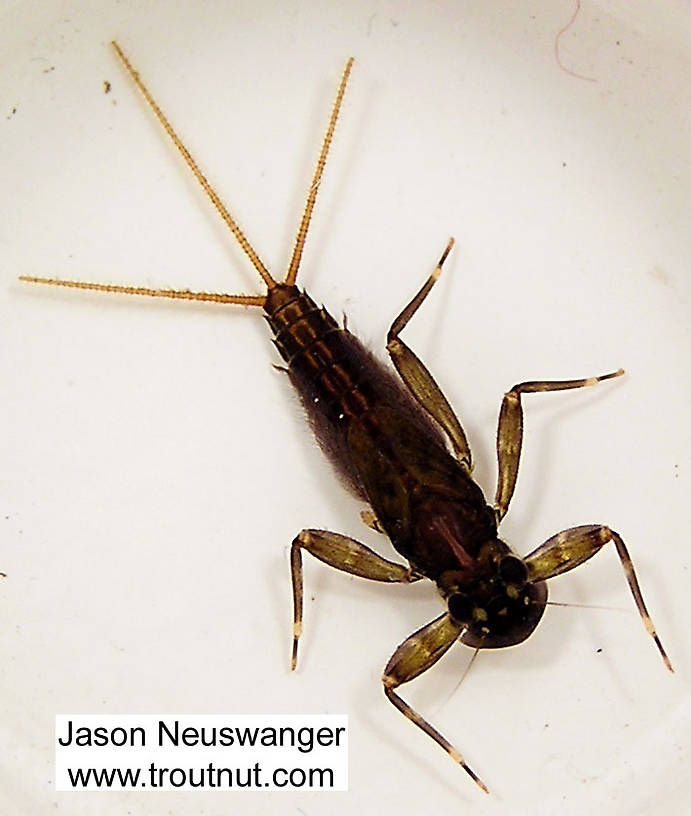
Hex Mayflies
Hexagenia limbata
The famous nocturnal Hex hatch of the Midwest (and a few other lucky locations) stirs to the surface mythically large brown trout that only touch streamers for the rest of the year.
Featured on the forum

I caught this tiny larva without a case, but it seems to key pretty clearly to to Glossosomatidae. From there, the lack of sclerites on the mesonotum points to either Glossosoma or Anagapetus. Although it's difficult to see in a 2D image from the microscope, it's pretty clear in the live 3D view that the pronotum is only excised about 1/3 of its length to accommodate the forecoxa, not 2/3, which points to Glossosoma at Couplet 5 of the Key to Genera of Glossosomatidae Larvae.

Troutnut is a project started in 2003 by salmonid ecologist Jason "Troutnut" Neuswanger to help anglers and
fly tyers unabashedly embrace the entomological side of the sport. Learn more about Troutnut or
support the project for an enhanced experience here.
Golden Duns
Like most common names,"Golden Dun" can refer to more than one taxon. They're previewed below, along with 4 specimens. For more detail click through to the scientific names.
Mayfly Genus Stenacron
These are sometimes called Golden Duns.
The species in this genus were formerly classified in Stenonema. See the genus Maccaffertium for details. Only one species, Stenacron interpunctatum, is important to fly fishermen. See its page for details.
See 5 more specimens...
Mayfly Species Heptagenia pulla
These are sometimes called Golden Duns.
This elegant species may produce fishable hatches.

This specimen is interesting because Heptagenia pulla has not been reported from Washington or neighboring states (Saskatchewan is the closest), yet the distinctive key characteristics are clear. Furthermore, it might even be a species not listed on this site—Jacobus et al. (2014) writes, "the northern and western specimens of H. pulla may in fact be a synonym of the Palearctic species H. dalecarlica Bengtsson (Kjaerstad et al. 2012) and the true H. pulla may be restricted to eastern North America."
It keys to the genus Heptagenia because the tarsal claw has a single basal tooth, and the gills on segment 7 have fibrils.
For the species key in Jacobus et al. (2014):
1. The left mandible is planate, whereas the right mandible is angulate.
2. The labrum is much wider than long.
3. There's a thin light-colored streak lateral to the eye on the head.
It keys to the genus Heptagenia because the tarsal claw has a single basal tooth, and the gills on segment 7 have fibrils.
For the species key in Jacobus et al. (2014):
1. The left mandible is planate, whereas the right mandible is angulate.
2. The labrum is much wider than long.
3. There's a thin light-colored streak lateral to the eye on the head.
See 2 more specimens...
References
- Jacobus, L. M., Wiersema, N.A., and Webb, J.M. 2014. Identification of Far Northern and Western North American Mayfly Larvae (Insecta: Ephemeroptera), North of Mexico; Version 2. Joint Aquatic Science meeting, Portland, OR. Unpublished workshop manual. 1-176.




